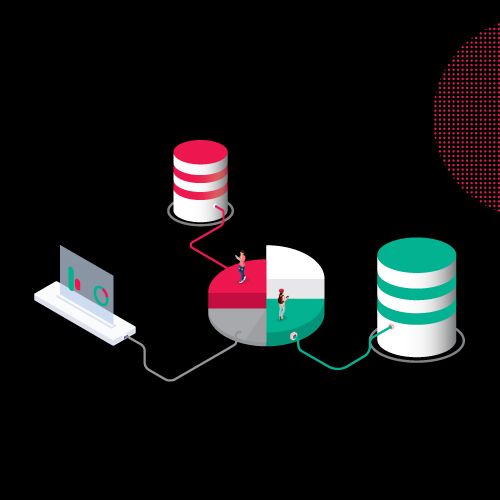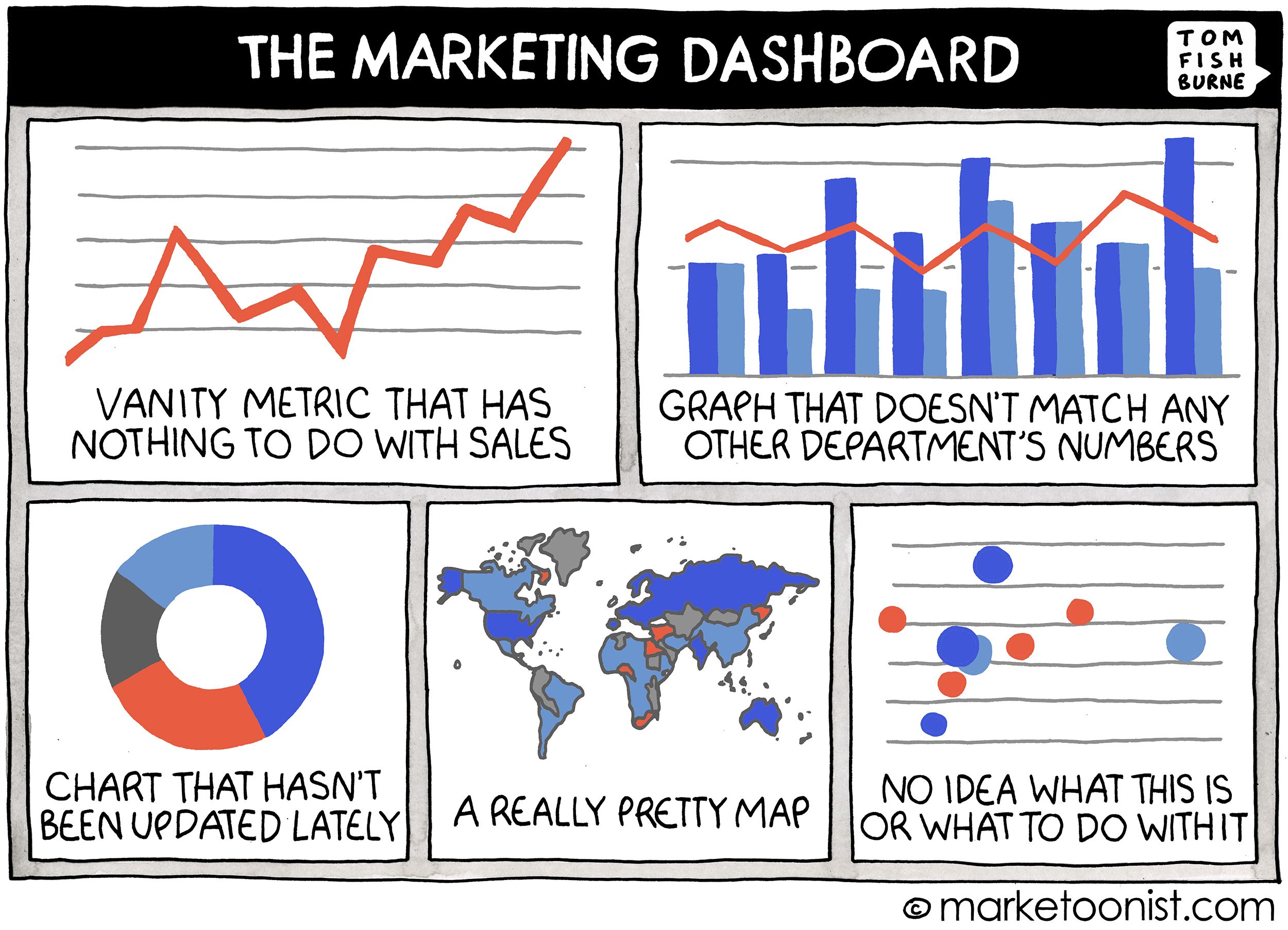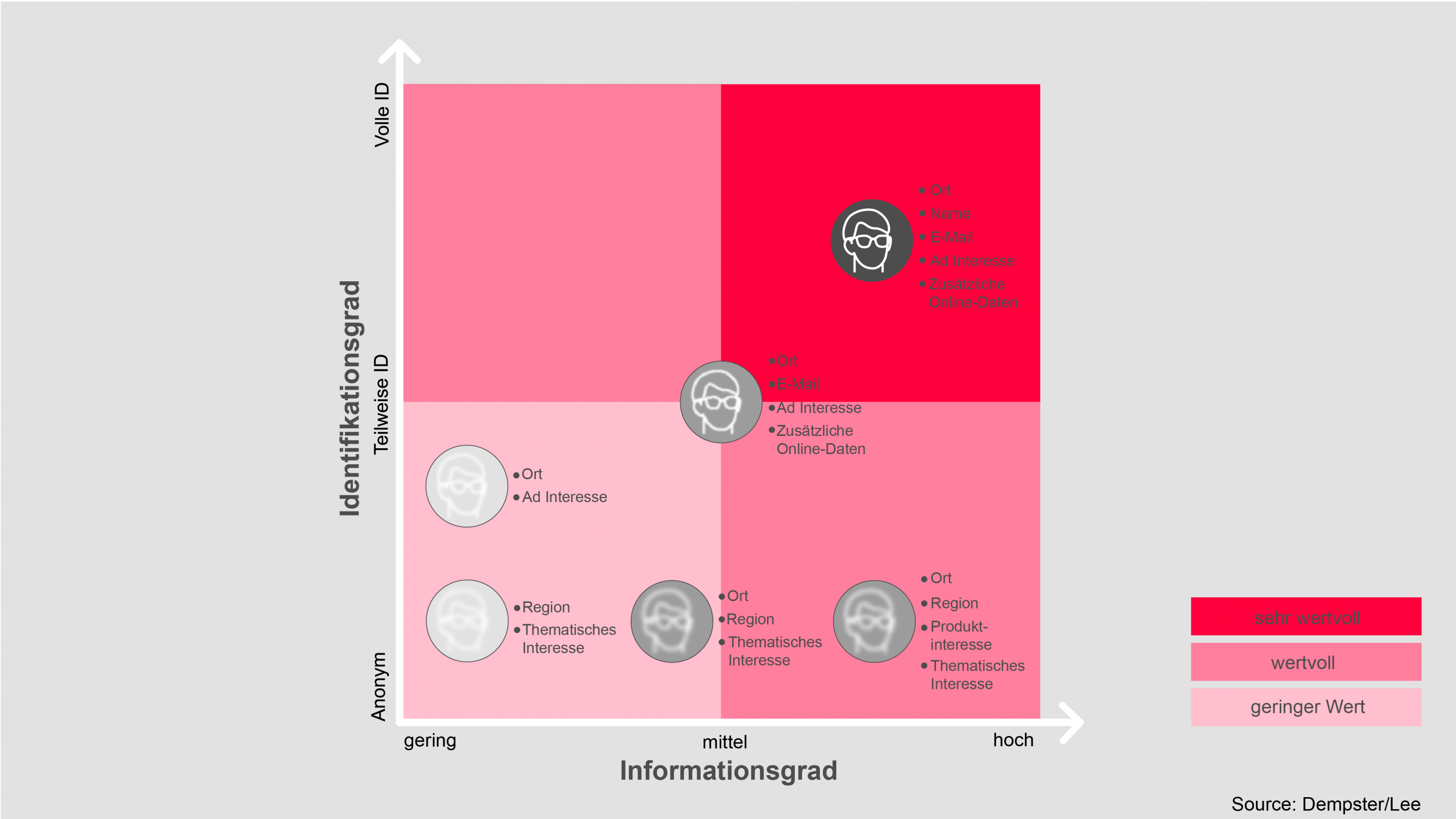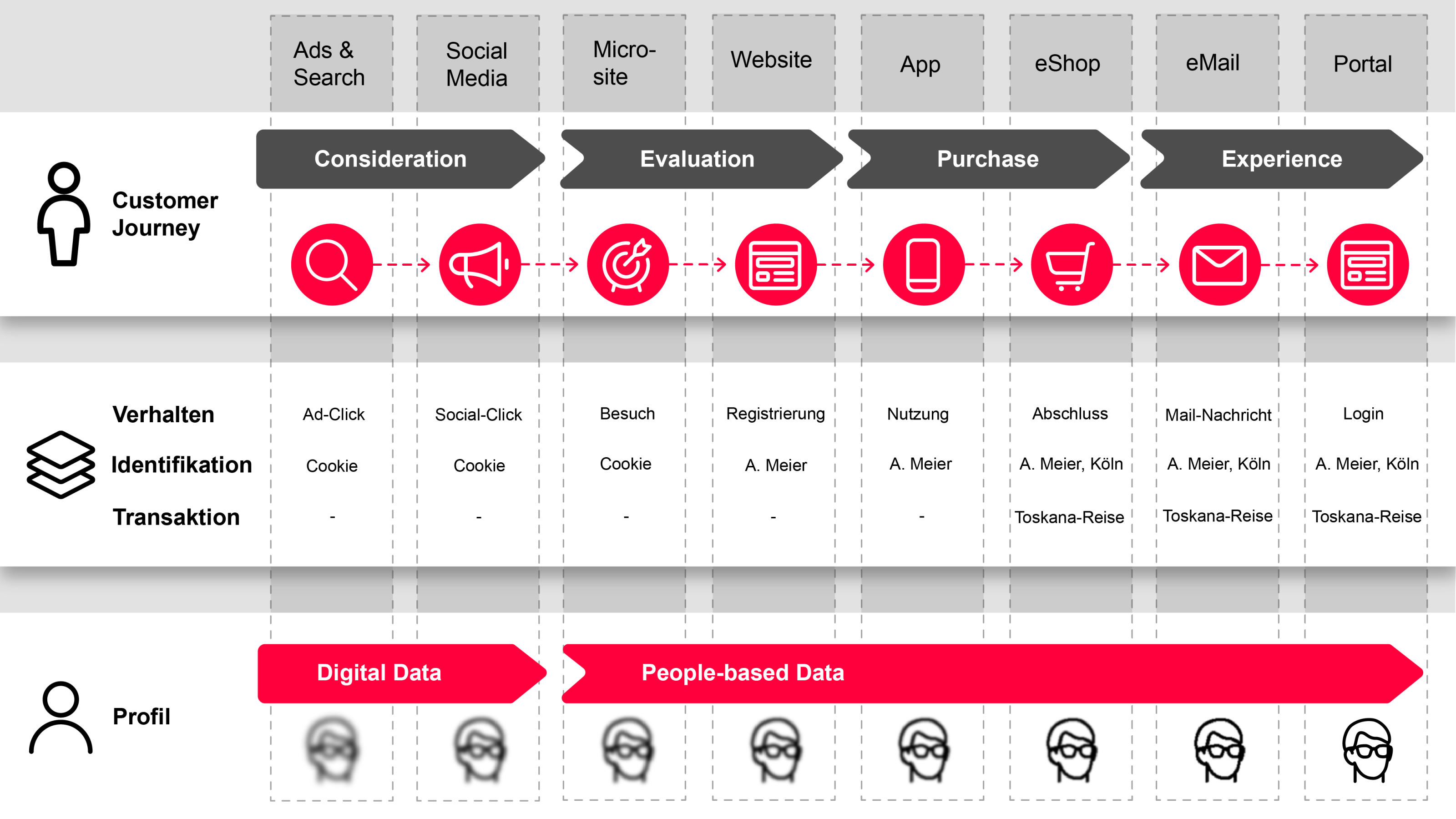More successful in business thanks to People-based Data
How to link data optimally – from unknown user profiles to a 360° view

Identifying new and suitable target groups and winning them over is one of the major challenges in marketing. A variety of media take on the role of conveying appropriate messages to the desired target groups. In order to achieve an even higher accuracy, data play an essential role. However, media data alone can hardly be used to achieve differentiation today – it is only when they are linked to personal data, so-called "people-based data", that they develop their full effect. For an effective campaign, therefore, not only media competence is required, but also the combination with deep tech and data knowledge is crucial.
In part one of my blog series "From Media Data to People-based Data" I show the value of data for your business.
"Data is the gold of the 21st century" are the catchphrases of these days and seem to be confirmed in the sales and profits of data collecting companies like Facebook and Google. Many companies are therefore now considering how to collect, use and profitably deploy data in order to save costs, among other things. Particularly in the media environment, the data-supported distribution of the budget can lead to significant savings if advertising expenditure is targeted precisely where there is the highest chance of conversion. The fact that "data-driven digital marketing" is suddenly at the top of the CMO agenda does not make a campaign more successful. Media data is often collected via ads, clicks, visits and conversions. However, there is not necessarily awareness of the purpose for which these are used and the impact of a certain metric such as a click-through ratio on the business. This can be summed up as "fake data-driven", but rarely does anyone get to the heart of it like Tom Fishburne does in his cartoons.

The consolidation of data – an essential step
The value of the collected data is high, if you approach it correctly and merge the data points in an appropriate way – the "appropriate way" is the key point. Since many marketers still think in terms of campaigns and channels, the merging of data often takes place at the campaign or channel level. While this is the easiest way to merge, it does not necessarily provide the highest long-term benefit. At the end of the day, this is an "inside-out" view, i.e. the world from a company or product perspective.
It is more complex, but more valuable, to bring the data together on the user or customer. This makes it possible to use the data to benefit long after the end of a campaign and after the last evaluation. Interests and inclinations that a user expresses, for example, by looking at a content or reacting to a campaign, can be picked up again later.
Let's take the campaign of a travel agency as an example:
A user's search for a holiday hotel in Tuscany may no longer meet his current needs after the end of the campaign – but the basic interest in holidays in Italy should at least remain constant over time. If it is possible to supplement such interests from the findings of further campaigns, for example the preference of active holidays over wellness holidays, then one receives comprehensive interest profiles of users over time, even if they are still anonymous. This information is of great value for the display of suitable advertising messages or for the selection of these users as addressees of a specific campaign.
However, this value can still be increased. If the merging of data on the user is continued, further behavioural data can be added to the media data. This could be, for example, the content visited on a website, interest in certain products or recommendations via social media. The greatest increase in value occurs when a user registers for a service or product and thus leaves anonymity. From this point on, existing interest or behavioral data is reliably recognizable across all channels and devices. Furthermore, this also provides a higher addressability. This means that, depending on the existing identification level, a user can be addressed by e-mail, mobile message or even by post.

Campaigns & Co: Using people-based data
At this level of addressability, one speaks of "People-based Data", and no longer of "Media Data" or "Digital Data" – by which the channel-based data, usually collected on a cookie basis, is meant. In order for the value of the data to be correspondingly high, people-based data must be linked with digital data. However, this cannot be done retrospectively, but must be planned in advance and carried out continuously along the customer journey.
For our travel provider, this could work as follows: In an early consideration phase, a new user becomes aware of a holiday offer in Tuscany via an advertisement when searching Google and using Facebook. One click takes him to the following microsite, which shows him the advantages of Tuscany. In all interactions, valuable information on behaviour can be collected on an anonymous basis, e.g. interest in Tuscany, but perhaps also the current life situation with family and children. These anonymous data are typically assigned cookie-based and due to the decreasing persistence of cookies they are often only assignable for a short period of time. If, however, the anonymous user registers for the holiday offer newsletter in a subsequent phase, the decisive step for linking digital data to people-based data takes place. This is because the e-mail address can now be used as a valid identification and is stored together with the behavioural data already collected. This step also makes it easier to obtain permission to use the data for other purposes. If the user registers for further services along his following journey or even books a holiday trip via the platform, data about him can be further enriched on his profile. The image of the user becomes sharper. The booking of a trip may not be the end of his journey – and thus the data collection is not yet complete. Just as with the first ad click, behavioral information can be continuously added during the holiday if the customer uses a digital touchpoint or responds to an e-mail.

How you benefit from people-based data
Over time, this creates a comprehensive view of the known customer. In his profile, constant information such as personal data and demographics is displayed, but also medium-term stable information such as interests and inclinations is aggregated. In addition, a timeline helps to map all interactions along the journey or the entire customer life cycle. A true 360°-view of the individual user, which cannot be built up in a day, but has to be built up and enriched with information continuously and possibly over months and years using a consistent strategy. The earlier in the journey the linking of the data to the user profile begins, the more extensive the benefits become. Linking digital data from advertising channels helps to enrich profiles more quickly with behavioral and interest data and can therefore be an interesting approach for efficient data collection.
However, the benefit of such an applied data strategy is only to a small extent the 360°-view of the user. More important than understanding the customer and his needs is, from a company's point of view, to apply this knowledge and translate it into activities. The concrete benefit for a company arises when this knowledge increases turnover or reduces costs. Digital marketing can play a key role in this process and can increase sales through suitable measures or save expenses through more efficient budget allocation. People-based data, with the detailed information it contains on users and customers, provides significant support – much more than a pure channel-based data collection. For example, people-based data can be used to put together segments that contain precisely those people who are interested in family holidays in Italy and who enjoy staying in four-star hotels with a wide range of wellness facilities. If search ads or social ads with a suitable message are targeted at precisely this segment, the probability of a deal and thus the effectiveness of the individual advertising Euro is significantly higher.
But not only high-quality user groups can be reached, also a higher and better reach can be achieved through people-based data. By selecting those user profiles that have actually converted, so-called "look-a-likes" can be found on third-party platforms based on these characteristics. This means that previously unknown users can be recorded on media platforms that have similar characteristics to existing customers. This allows you to increase conversion and achieve a significant increase in the efficiency of your advertising budget.
Other channels such as e-mail or websites can also be used much more effectively if the corresponding activation systems can access people-based data. Newsletter-like content nurtures, which continuously play out messages relevant to the user via e-mail, can draw on the interests of the individual recipient collected in the profile. Their contents can thus be personalized much better. Likewise, new interactions appearing in the user's timeline can trigger call-to-action-nurtures-such as the sending of a follow-up e-mail if the travel booking process on the website is aborted before completion. So People-based Data enables People-based Marketing.
Every marketing idea is only worth as much as it can be realized. Technology is the main enabler, but can also become an obstacle. The selection of the appropriate technology for the defined visions and goals is therefore central and will be discussed in the second part of this series.
Five steps to the People-based Data Strategy
Would you like to get off to a good start with People-based Data? Sometimes it is worth taking a step back and taking a look at the strategy. This forms the basis for your measures. For an optimal start, I will show you how to achieve a People-based Data Strategy in five steps.















